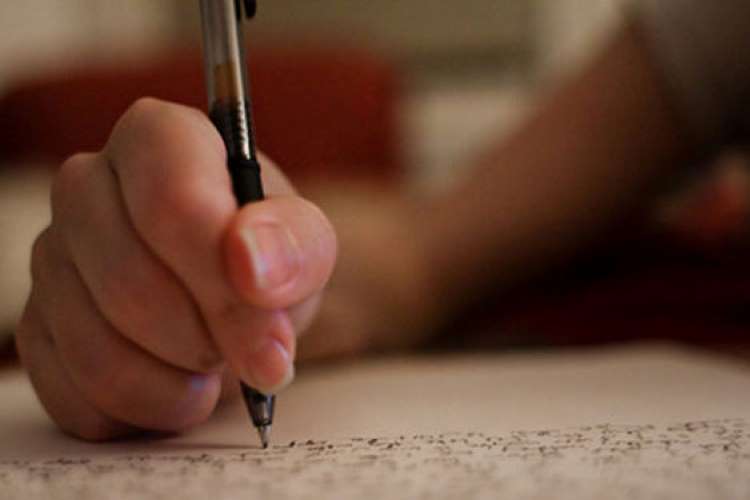English grammar is the basis of English. If you are not aware of the rules and uses of grammar in English, you can’t be fluent in the language. Grammar is something that gives meaning, shape, and direction to your sentences.
Are you stressed about the usage of numbers in grammar? Well, the number is just a grammatical category. When we talk about the usage of numbers in English, the two number categories are singular and plural. Both of these number categories are related to the grammar aspects including verbs, nouns, pronouns, and determiners. In simple words, all the grammar ethics like noun, pronoun, verb, or determiner can be described as singular or plural.
The numbers are a grammatical contrast between singular and plural. If you want to get all the knowledge about the meaning, types, and functions of numbers in English grammar, you should go ahead and read this article.
You will get all the knowledge along with the examples so that you not only understand but implement the number categories in your sentences. Remember, you can use a certain aspect confidently once you have a proper understanding of it. So, begin reading this article to get the perfect acknowledgement and understanding.
Also Read: What is a Collective Noun? Let’s Learn the Concept With the Help of Examples!
Number in English Grammar
Numbers in grammar refers to the singular and plural contrast between verbs, nouns, pronouns, and determiners. All of the states can be represented in the singular as well as plural form with the help of numbers. The examples and rules given below in the article will give you more appropriate knowledge about the number functions.
You must be aware that numbers help to denote the quantity of more or less. If you don’t have perfect knowledge regarding the usage of numbers in your sentences, you can not refer to something according to quantity in your sentence. So, let’s begin with the understanding of the number types as well as the number rules to speak, write, read, and listen perfectly in English.
Number in English Grammar Examples
Go through the following examples to understand the role and functions of numbers. You must also know about one interesting quirk of English grammar that zero is counted in the plural. For example, zero cats. You must remember this rule to use it in your writing or speaking.
| Word Type | Singular Example | Plural Example |
| Noun | Dog, cow | Dogs, cows |
| Pronoun | I, me, you, he, him, she, her, it | we, us, you, they, them |
| Determiner | this, that, a, an, my, your, his, her, its | these, those, our, your, their |
| Verb | am, is, was, has, I play, he plays | are, were, have, they play |
Also Read: Types of Nouns: Definitions of All The Nouns with Examples
Number Types
The numbers in grammar are used in two types. These include singular and plural. Singular is the count for only one usage of a pronoun or noun. For example, father, pen, aunt, etc. Whereas plural refers to the count of more than one for any grammar aspect like noun or pronoun.
For example, aunts, tables, pens, etc. The examples are given below according to the pronouns, nouns, and determiners. So, go ahead with the examples and understand them for each aspect.
Also Read: Direct and Indirect Speech: Get to Know the Rules and Application with Examples
Number Rules
The number rules are given below along with the examples. Let’s check them out to use them in our communication.
Rule 1
Generally, you can use “s” at the end of a singular noun to make it plural.
Example:
#. Singular- Plural
#. Pen- Pens
#. Cat- cats
#. House- Houses
#. Dog- Dogs
#. Mobile- Mobiles
Rule 2
You must use “es” at the end if there exist s, sh, ch, x, and z in the end.
Examples:
Singular- Plural
#. Bus- Buses
#. Dish- Dishes
#. Branch- Branches
#. Fox- Foxes
#. Fez- Fezes
Rule 3
The letter “s”While is added at the end. However, the pronunciation of “ch” is “k” .
Example:
Singular- Plural
#. Monarch- Monarchs
#. Patriarch- Patriarchs
#. Matriarch- Matriarchs
#. Stomach- Stomachs
#. Hierarch- Hierarchs
Part 1: When there’s a “y” in the end and a Consonant before that “y”, “i” substitutes it and an “es” thereafter.
Example:
Singular- Plural
#. Story- Stories
#. Hobby- Hobbies
#. Army- Armies
#. Fly- Flies
#. Baby- Babies
Part 2: But if there’s a vowel ahead of that “y”, no need to change it, only “s” to add.
Example:
Singular- Plural
#. Donkey- Donkeys
#. Toy- Toys
#. Day- Days
#. Joy- Joys
#. Play- Plays
Rule 4
“v” replaces f or fe and then adds an “es” to finish it.
Example:
Singular- Plural
#. Thief – Thieves
#. Wife- Wives
#. Knife- Knives
#. Wolf- Wolves
#. Leaf- Leaves
Part 1: “es” to be added if the noun is finished by “o” and a consonant places ahead.
Example:
Singular- Plural
#. Hero- Heroes
#. Mango- Mangoes
#. Zero- Zeroes
#. Potato- Potatoes
#. Echo- Echoes
Part 2: but when there’s a vowel before “o”, only “s” is enough.
Example:
Singular- Plural
#. Cuckoo- Cuckoos
#. Bamboo- Bamboos
#. Studio- Studios
#. Portfolio- Portfolios
#. Cameo- Cameos
Exception 1: Though there’s an “o” and a consonant ahead of it, some nouns use only “s”.
Example:
Singular- Plural
#. Photo- Photos
#. Piano- Pianos
#. Radio- Radios
#. Canto- Cantos
#. Memo- Memos
Exception 2: for some, “s” and “es” both are correct.
Singular- Plural
#. Mosquito- Mosquitos/mosquitoes
#. Commando- Commandos/commandos
#. Portico- Porticos/porticoes
#. Calico- Calicos/calicoes
#. Memento- Mementos/mementoes
Rule 5
Some require changing the middle-vowel of the word to make it plural.
Example:
Singular- Plural
# Man- Men
#. Woman- Women
#. Foot- Feet
#. Mouse- Mice
#. Tooth- Teeth
Rule 6
Some require en, ren and ne to add at last.
Example:
Singular- plural
#. Ox- Oxen
#. Child- Children
#. Brother- Brethren (brothers also correct)
#. Cow- Kine (cows also correct)
#. Sister- Sistren (sisters also correct)
Part 1: if “man” means human being in a compound noun(a noun that contains two or more words that jointly make a single noun), “men”replaces that “man”.
Example:
singular- plural
#. Fisherman- Fishermen
#. Workman- Workmen
#. Boatman- Boatmen
#. Man-of-war- Men-of-war
#. Salesman- salesmen
Part 2: but when “man” is just a part of the word, or it refers to any ethnic group, race or civilian, there comes “s”.
Singular- Plural
#. Musalman- Musalmans
#. Brahman- Brahmans
#. German- Germans
#. Norman- Normans
Rule 7
“s” to be added when there’s a “ful” in the end.
Example:
singular- plural
#. Handful- Handfuls
#. Mouthful- mouthfuls
#. Spoonful- Spoonfuls
#. armful- Armfuls
#. cupful- cupfuls
Part 1: If a compound noun contains several words, “s” comes to join with the main part of that noun.
Example:
Singular- Plural
#. Brother-in-law- Brothers-in-law
#. Passers-by- Passers-by
#. Step-brother- Step-brothers
#. Commander-in-chief- Commanders-in-chief
#. Maid-servant- Maid-servants
Part 2: in some cases,“s”comes in every part to make it so.
Example:
Singular- Plural
#. Lord-justice- Lords-justices
#. Man-servant- Men-servants
#. Woman-servant- Women-servants
Rule 8
Besides, adding “s” only in the end gets it done for a few.
Example:
Singular- Plural
#. Book-shelf- Book-shelves
#. Book-case- Book-cases
#. Major-general- Major-generals
#. Poet-laureate- Poet-laureates
#. Forget-me-not- Forget-me-nots
Rule 9
Some singular nouns have no plural form, only used in singular.
Example:
#. Furniture
#. Scenery
#. Issue
#. Bread
#. expenditure
Rule 10
Adversely, some are always used as a plural form.
Example:
#. Mumps
#. Scissors
#. Trousers
#. Spectacles
#. Assets
Rule 11
Though some nouns seem like singular, but actually they are plural.
Example:
#. Government
#. Peasantry
#. People
#. Cattle
#. Mankind
Rule 12
Similarly, some nouns seem like plural though they are singular.
Example:
#. Physics
#. Politics
#. Ethics
#. News
#. Wages
Rule 13
Some have the same singular and plural form.
Example:
#. Deer
#. Sheep
#. Species
#. Corps
#. Canon
Rule 14
In case of letters, numbers and other symbols, it takes an apostrophe and s to change it.
Example:
#. Kell, write your g’s and y’s clearly.
#. Kim, add two 5’s and three 8’s.
Rule 15
There is no specific rule for changing the number of pronouns. It’s all about memorizing.
#. Singular- I, my, me, mine, he/she, you.
#. Plural- we, our, ours, us, you, they
#. Singular- him/her, your, this, that, it, his/her
#. Plural- them, your, these, those, their, they.
Therefore, go through all of these number rules to understand their functions properly. They make a huge difference in a sentence if used wrongly. If you have understood them properly, you will avoid making mistakes in this part. So, make use of your learning by practicing.
Also Read: Interjection in English Grammar: Let’s Discuss Some Rules and Usage in Daily Life
Conclusion
Grammar is the most important thing when it comes to English learning. All the candidates thinking about learning English proficiently have to first learn about the grammar aspects perfectly. This is crucial because, without grammar, no sentence can make sense. You can not show your perceptions or thoughts to someone because of the lack of grammar information.
We hope that this article has given you all the information and knowledge about the role and use of numbers in English grammar. If you have any query regarding the same or any other thing related to English, you should visit the Fluent life website. You can also start learning or upgrading your skills through this platform as the experts take classes to develop the English skills of the candidates.
You also have the choice to download the Fluent Life application on your iOS or Android mobile phone for customized personal lectures where you get instant feedback on your performance and can resolve all your queries.
A good platform can make your dreams come true, so you must visit this one to see the difference in your skills. You can comment in the box given below to share or ask anything!






